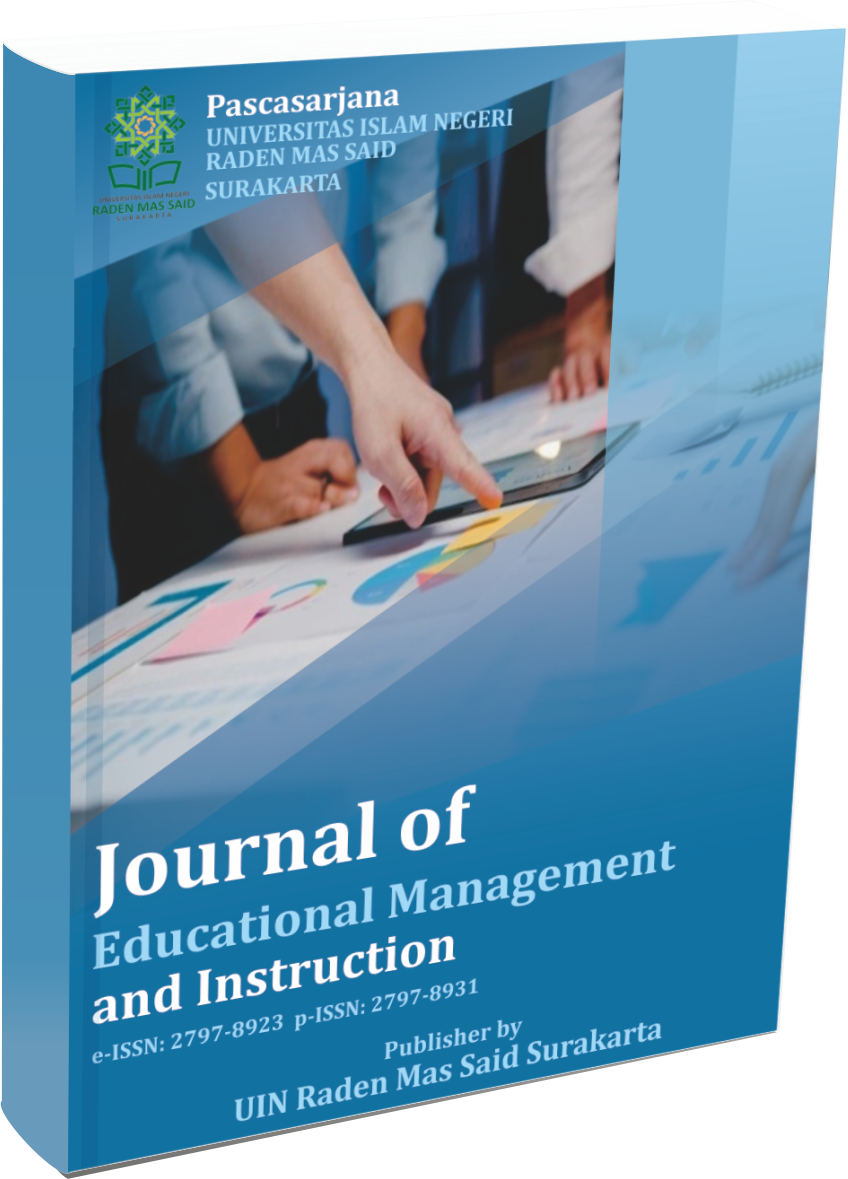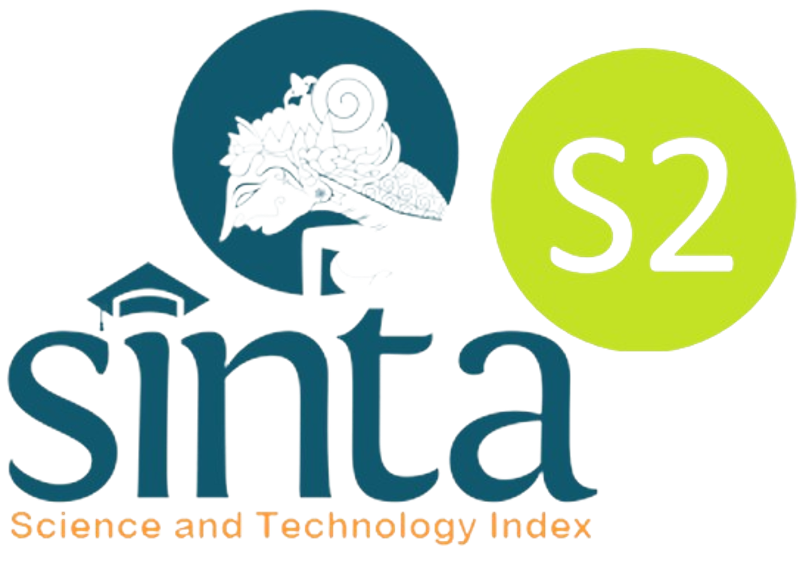Error analysis of undergraduate students' writing performances: IELTS-based activities
DOI:
https://doi.org/10.22515/jemin.v1i1.3446Keywords:
error analysis, IELTS-based activities, students’ writing performancesAbstract
As English as a Foreign Language (EFL) students, it is expected that they should have good ability in four skills of English, including writing skill. However, errors are still found in students’ written works. This paper examines the different types of writing errors made by 10 Indonesian undergraduate students who were enrolled in an IELTS preparation class. Descriptive qualitative research was employed in this study. The errors in the term papers were identified and classified accordingly. The students’ works were assessed based on four aspects: task achievement, cohesion and coherence, lexical resource, grammatical range, and accuracy. The result of this study showed that the highest percentage of students’ errors was in terms of lexical resource and grammatical range (accuracy), followed by three other common errors: singular or plural, word choice, and punctuation. Regarding to the task achievement, in Task 1, most of the students addressed the task but they didn't cover all the information needed. While in Task 2, some students presented clear opinions but with limited and inadequately developed ideas and gave no conclusion. Furthermore, for the results of cohesion and coherence in Task 1, most students showed good logical sequence and overall progression but with faulty cohesion devices. However in Task 2, some students presented either incoherent or illogical ideas or information. These results contribute as fruitful insights for language learners who want to enhance the IELTS comprehension, particularly writing performance.
Downloads
References
Alberth. (2018). Indonesian high school student motivational orientations for learning english as a foreign language: Some preliminary findings. Electronic Journal of Foreign Language Teaching, 15(2), 304–321.
Al-Khasawneh, F.M. (2014). Error Analysis of Written English Paragraphs by Jordanian Undergraduate Students: A Case Study. International Journal of English Language, Literature and Humanities, 2(8), 85-100.
Al-Khresheh, M.H. (2016). A Review Study of Error Analysis Theory. International Journal of Humanities and Social Science Research, 2, 49-59.
Al-Zoubi, S.M. (2018). The Significance of Error Analysis in Written Production: A Case Study of Ajloun National University Students. International Journal of English Language and Literature Studies, 7(4), 150-159.
Amiri, F., & Puteh, M. (2017). Error Analysis in Academic Writing: A Case of International Postgraduate Students in Malaysia. Advances in Language and Literary Studies, 8(4), 141-145.
Arcuino, C. L. T. (2013). The relationship between the Test of English as a Foreign Language (TOEFL). The International English Language Testing System (IELTS) scores and academic success of international Master’s students, Colorado State University.
Christensen, D., Barnes, J., & Rees, D. (2011). Improving The Writing Skills Of Accounting Students: An Experiment. Journal of College Teaching & Learning (TLC), 1(1), 45–52. https://doi.org/10.19030/tlc.v1i1.1902
Divsar, H., & Heydari, R. (2017). A Corpus-based Study of EFL Learners’ Errors in IELTS Essay Writing. International Journal of Applied Linguistics & English Literature, 6(3), 143-149.
Ellis, R. and Barkhuizen, G, B, 2005. Analysing Learner Language. Oxford University Press. UK. In Amiri, F. & Puteh, M. (2017). Error Analysis in Academic Writing: A Case of International Postgraduate Students in Malaysia. Advances in Language and Literary Studies, 8 (4), 141-145
Fareed, M., Ashraf, A., & Bilal, M. (2016). ESL Learners’ Writing Skills: Problems, Factors and Suggestions. Journal of Education and Social Sciences, 4 (2), 81-92.
Huy, N.T. (2015). Problems Affecting Learning Writing Skill of Grade 11 at Thong Linh High School. Asian Journal of Educational Research, 3(2), 53-69.
Hyatt, D. (2013). Stakeholders’ perceptions of IELTS as an entry requirement for higher education in the UK. Journal of Further and Higher Education, 37(6), 844–863.
Indriyani, A. (2018). An Error Analysis on Using Cohesive Devices in Students’ Narrative Writing Text at SMK Muhammadiyah 2 Metro. Unpublished Udergraduate Thesis, Retrieved from http://repository.metrouniv.ac.id
Khansir, A. A. (2013). Error analysis and second language writing. Theory and Practice in Language Studies, 3(2), 363.
Kharmilah, P., & Narius, D. (2019). Error Analysis in Writing Discussion Text Made by Students at English Department of Universitas Negeri Padang. Journal of English Language Teaching, 8(3), 327–335.
Lam, Y. W., Hew, K. F., & Chiu, K. F. (2018). Improving argumentative writing : Effects of a blended learning approach and gamification. Languag Learning & Technology, 22(1), 97–118.
Lauder, A. (2008). The Status and Function of English in Indonesia: A Review of Key Factors. Makara, Sosial Humaniora, 12(1), 9-20.
Nartiningrum, N. & Nugroho, A. (2020). Online Learning amidst Global Pandemic: EFL Students' Challenges, Suggestions, and Needed Materials. ENGLISH FRANCA: Academic Journal of English Language and Education, 4(2), 115-140.
Nugroho, A., Ilmiani, D., & Rekha, A. (2021). EFL Teachers' Challenges and Insights of Online Teaching amidst Global Pandemic. Metathesis: Journal of English Language, Literature, and Teaching, 4(3), 277-291.
Nugroho, A., & Rahmawati, A. (2020). “Let’S Write a Caption!”: Utilizing Instagram To Enhance Esp Students’ Writing Skills. Jurnal Basis, 7(1), 1-13. https://doi.org/10.33884/basisupb.v7i1.1782
Nurhayati, S. & Nurdini, R.A. (2019). Error Analysis on EFL Students’ Independent Writing Task of TOEFL iBT. Elite Journal, 6(2), 159-172.
Rahmatunisa, W. (2014). Problems Faced by Indonesian EFL Learners in Writing Argumentative Essay. English Review: Journal of English Education, 3(1), 41-49.
Richards, J. C., Richards, J. C., & Renandya, W. A. (2002). Methodology in language teaching: An anthology of current practice. Cambridge: Cambridge university press.
Salima, R. (2012). Measures of Eliminating EFL Students’ Errors in Writing. International Conference on Education and Education Psychology (ICEEPSY2012). https://doi.org/10.1016/j.sbspro.2012.11.416
Sulistyo, T., Mukminatien, N., Cahyono, B. Y., & Saukah, A. (2019). Enhancing learners’ writing performance through Blog-Assisted Language Learning. International Journal of Emerging Technologies in Learning, 14(9), 61–73. https://doi.org/10.3991/IJET.V14I09.9535
Taylor, J.R. (1997). An Introduction of Error Analysis: The Study of Uncertainties in Physical Measurement (2 ed). California: University Science Boo
To, V., Lê, T., & Lê, Q. (2013). A comparative study of nominalisation in IELTS writing test papers. International Journal of Innovative Interdisciplinary Research, 1(4), 15–21.
Wu, H., & Garza, E. V. (2014). Types and attributes of English writing errors in the EFL context-a study of error analysis. Journal of Language Teaching and Research, 5(6), 1256.
Downloads
Submitted
Accepted
Published
How to Cite
Issue
Section
License
Copyright (c) 2021 Novrika Nartiningrum, Pusfika Rayuningtya, Diska Fatima Virgiyanti

This work is licensed under a Creative Commons Attribution-NonCommercial 4.0 International License.
Copyright
Copyright aims to protect the specific way the article has been written to describe an experiment and the results. Journal of Educational Management and Instruction is committed to its authors to protect and defend their work and their reputation and takes allegations of infringement, plagiarism, ethical disputes, and fraud very seriously. Automotive Experiences is published under the terms of the Attribution-NonCommercial 4.0 International (CC BY-NC 4.0). Authors retain copyright and grant the journal right of first publication (online and print) with the work simultaneously. We use the restrictive license (non-commercial) as follows:
BY (attribution): Users are allowed to share, distribute and redistribute the published article in any medium or format, with an identification of the authors and its initial publication in this journal. Authors are encouraged to post and distribute their articles immediately after publication (e.g., institutional or public repositories, personal websites). Authors are allowed to enter into additional contractual arrangements for the non-exclusive distribution of the published and an acknowledgment of its initial publication in this journal.
NC (non-commercial): Users are not allowed to use the article commercially without the permission of the authors. Authors agree explicitly that the published article is indexed worldwide in databases, repositories and indexation services, even if these services operate on a commercial basis. Authors grant Journal of Educational Management and Instruction explicit the right to include the published articles in databases, repositories and indexation services.
License
License to Publish
The non-commercial use of the article will be governed by the Attribution-NonCommercial 4.0 International (CC BY-NC 4.0). The author hereby grants Journal of Educational Management and Instruction an exclusive publishing and distribution license in the manuscript include tables, illustrations or other material submitted for publication as part of the manuscript (the “Articleâ€) in print, electronic and all other media (whether now known or later developed), in any form, in all languages, throughout the world, for the full term of copyright, and the right to license others to do the same, effective when the article is accepted for publication. This license includes the right to enforce the rights granted hereunder against third parties.
Author's Warranties
The author warrants that the article is original, written by stated author/s, has not been published before, contains no unlawful statements, does not infringe the rights of others, is subject to copyright that is vested exclusively in the author and free of any third party rights, and that any necessary written permissions to quote from other sources have been obtained by the author(s).
User Rights
Under the Creative Commons Attribution-Non Commercial 4.0 International (CC BY-NC 4.0) license, the author(s) and users are free to share (copy and redistribute the material in any medium or format) and adapt (remix, transform, and build upon the material). Users must give appropriate credit, provide a link to the license, and indicate if changes were made.
Rights of Authors
Authors retain the following rights:
- Copyright, and other proprietary rights relating to the article, such as patent rights,
- The right to use the substance of the article in future own works, including lectures and books,
- The right to reproduce the article for own purposes, provided the copies are not offered for sale, and
- The right to self-archive the article.
Co-authorship
If the article was prepared jointly with other authors, the signatory of this form warrants that he/she has been authorized by all co-authors to sign this agreement on their behalf, and agrees to inform his/her co-authors of the terms of this agreement.

























